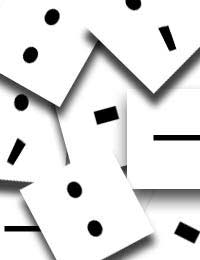Colon, Dashes and Hyphens in English

Colons, semi-colons, dashes and hyphens in the English language are commonly used for structure and form. They have different rules, and have different meanings within a sentence or a paragraph. In English text, more often than not, colons, dashes and hyphens make text easier to read and more understandable.
Let’s take a look at each one and the ways in which you can use them correctly within the English language:
The Colon
When using the colon in the English language, they are there to show the reader what is going to follow on from what you have just said. In a way, using a colon signals to the reader to anticipate what is next. Colons are normally used before a significant explanation or a list of some sort.However, make sure before using a colon in a sentence that the clauses before the colon is complete; so, in other words, make sure the clause is a complete sentence that could stand alone if needed.
- Richard looked on in confusion: Does he need to go left or right?
- There are three things you need to buy today: milk, sugar and teabags.
- The children had a great time at the zoo. They saw the following animals: goats, cows, rabbits and lambs.
The clauses that end in the words ‘as follows’ or ‘the following’ are examples of when you would use a colon in a sentence. However, when the sentence ends in ‘such as’, you can’t use a colon as it isn’t a complete clause. The words ‘such as’ should be followed by the item or object first in the list, and then a comma.
- When I was shopping I bought the following: milk, tea, cheese, coffee and sugar.
- When I was shopping I bought things such as milk, tea, cheese, coffee and sugar.
The Semicolon
The semicolon has a slightly different function compared to the colon. You would use a semicolon when you are joining two clauses that are closely related in content. The clauses, when using a semicolon, shouldn’t have coordinating conjunctions before it (but, and, or, yet).However, they can be used in sentences with coordinating conjunctions when there is internal punctuation:
- The dispute included Rudolf, the dog; Blister, the cat; and Roller, the hamster.
The Hyphen
The hyphen, when used in the English language, is a short horizontal line used in a few compound words. Sometimes, the hyphen is used to connect root words with prefixes and suffixes.- Mother-in-law
- Anti-American
- Twenty-nine
Not all compound words are hyphenated, and neither are all root words that have prefixes and suffixes attached to them.
- Bathroom
- Bedroom
- Postmodern
If you need help decided whether or not a word needs a hyphen, use a good quality and updated dictionary. This is a good way to make sure you are using the hyphen correctly.
The Dash
In the English language, there are actually two types of dashes used: the ‘en dash’ and the ‘em dash’.The en dash is different to the hyphen as it is longer. It is used primarily with numbers and there is no space between the numbers and the en dash.
The em dash is not as common and is used to show a huge difference in direction or in emphasis from the main sentence. There is no space between the words and the em dash between them.
Using colons, semicolons, dashes and hyphens makes English text much easier to interpret; they also make the text more readable.

Re: Question Marks, Periods and Exclamation Points in English
Chay na sanol repa s000 howtolearnenglish.co.uk
Re: Why English Grammar Is Important
There are a certain parts that werent.... Or There are certain parts that werent...
Re: Understanding Intonation and Stress in Speech
How much for the intonation e-book? Best regards, Lily
Re: English Language: Silent Letters
@Deb - according to the Cambridge Dictionary, it should be pronounced 'wenz.de', which doesn't sound right - I think…
Re: English Language: Silent Letters
I have never known the "d" in Wednesday to not be pronounced - it should be Wed-nes-day - which is from the Germanic Wodan's…
Re: Using English Verbs, Adverbs and Adjectives
i need to know all the adjectives and verbs for my GCSE exam omg i am sick of exams now they are anoying me
Re: Using English Idioms
I found the contents very useful and relevant to my classroom transations.
Re: What You Will Need to Learn English
i love reading your article it help me to understand how important for me to reading english.. i want to learn english…
Re: How to Write Paragraphs
As a teacher teaching English I find your website helpful. Cheers
Re: Ten Tips to Help You Learn English as a Second Language
The biggest mistake Spanish students make is trying to translate word for word. For example;…